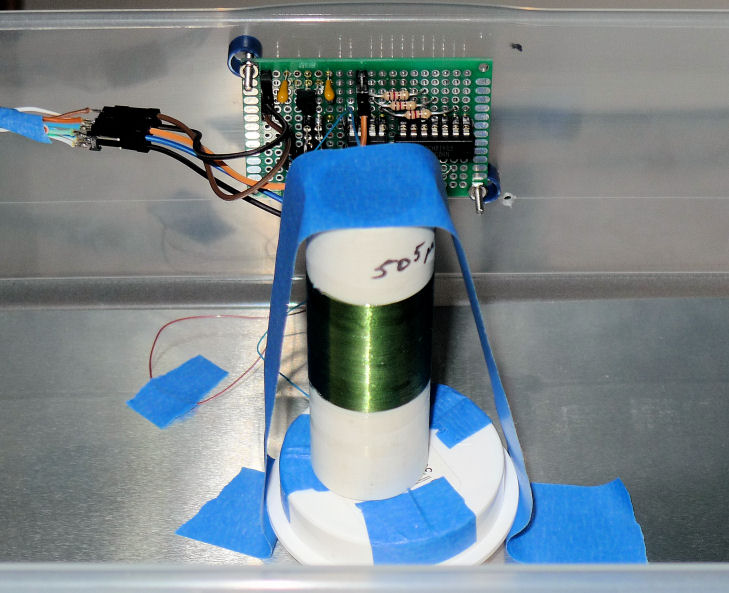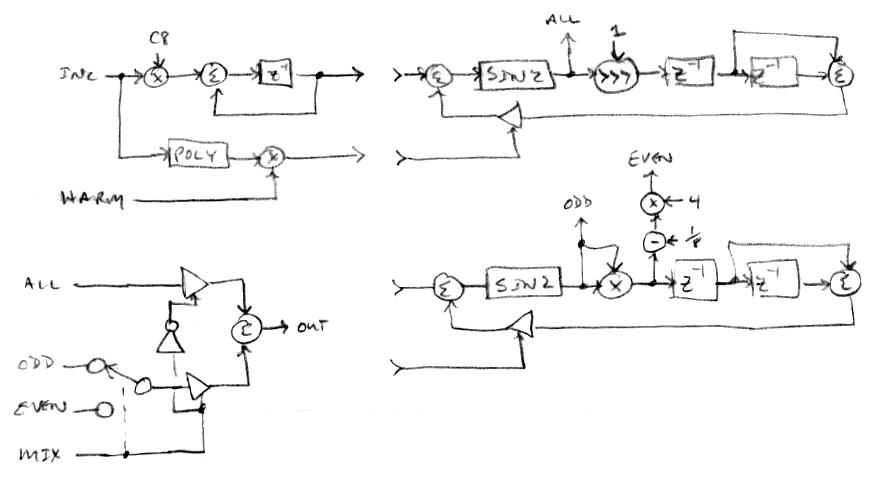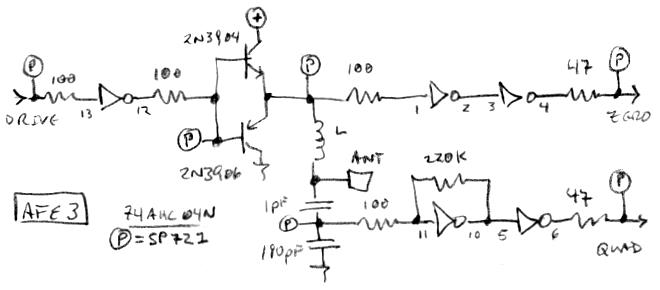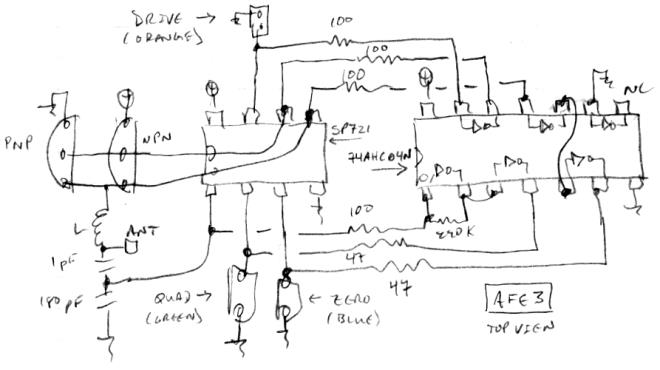Antenna Homologation
Bought another small "Holds CDs!" Sterilite plastic box (model 1803, UPC 073149803863) from Home Despot the other day (same box I'm using for the volume antenna). Cut some 150mm wide aluminum flashing to 300mm long, bent/mangled it on a small dowel, and stuck it inside. Moved the AFE2 and 0.5mH coil from my pitch antenna over to it, and mounted it on a 1" RAM rubber ball mount I bought a while back. Here's what it looks like:
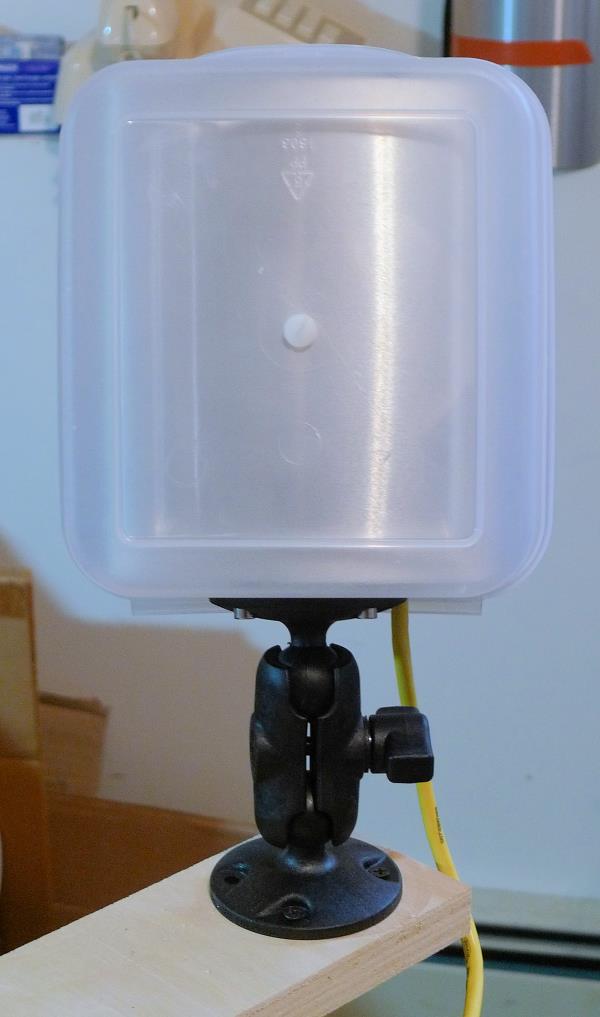
New pitch antenna box, viewed from the playing position. It's a somewhat smaller target.
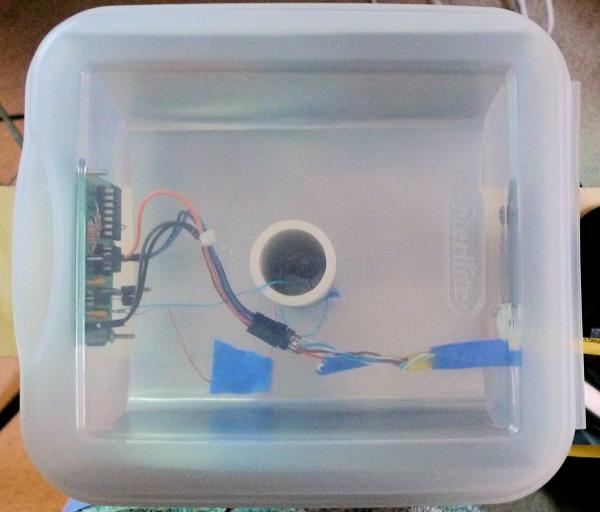
View through the back, with the antenna top oriented to the left here.
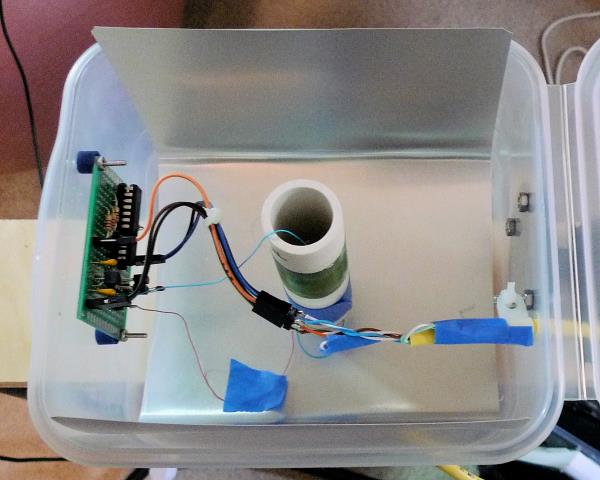
View with the back open. Coil in the center, AFE2 board to the left (top when playing). For a production type build I'd probably try to locate the AFE2 on the right (bottom when playing). The cable strain relief isn't ideal here (cable clamp zip-tied to a screw). The coil is only held in place by sitting over the plastic mounting screw, with the back of the box (when closed) holding it tight to the plate. Not ready for prime time!
The new antenna popped right up when I switched the D-Lev on, which is a great thing about using a digital phase locked loop for the oscillator. No hunching over tuning slugs for hours, putting the cover on, taking it off, etc. it just works.
It resonates at 1.763MHz (my old pitch antenna resonated at 1.844MHz). I had to adjust the linearity control to -4 (this was +3 for the old pitch antenna). It's interesting (and really great!) that the simple linearization algorithm that I discovered is able to largely correct antennas with such a different geometries (the old antenna was a flat plate). The linearity algorithm seems robust and quite not-critical, with the only adjustment a minor influencing of the near field. You almost don't need the adjustment knob (but it's nice to be able to tweak it).
I'll play this for a while to see how a smaller pitch target feels. Hopefully it will be OK, and I'll be able to employ the same box for both volume and pitch, just with different coils inside. Been meaning to try this for a while now, good to finally address it.
=================
3D Antenna Geometry
From my simulations - and now real-life experience - with plate antennas, it's clear that they don't have to be flat plates in order to be linearizable. As long as most of the antenna can "talk to the hand" in the near field, then the cross section can be a U, a square or round tube, a pie plate, etc. making the whole thing more compact. Compactness isn't the ultimate goal, however, if it reduces the playing "sweet spot" to something difficult for the player to stay aligned to.
I imagine a 3D plate antenna could entirely enclose the coil and AFE, and thus provide some electrostatic shielding for the internals.


